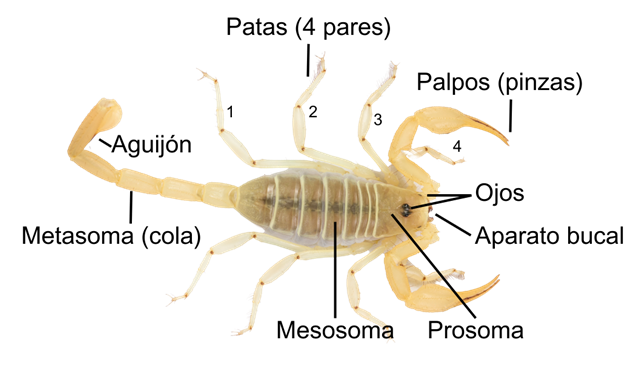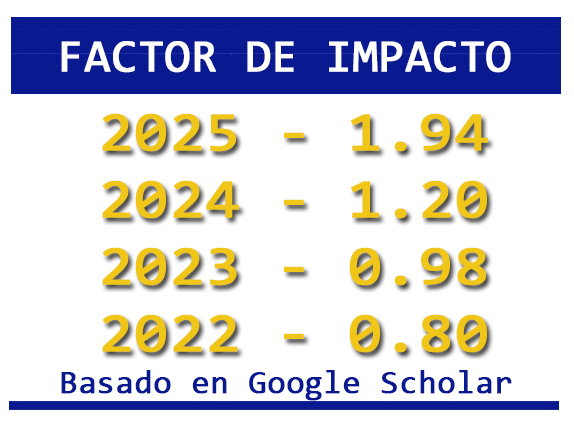Escorpiones de Sonora, México y su potencial biotecnológico
DOI:
https://doi.org/10.36790/epistemus.v19i38.408Palabras clave:
Venenos, Farmacología, Biofármacos, medicina, alacranesResumen
Los escorpiones son arácnidos, fácilmente reconocibles por la presencia de una cola que termina en aguijón, así como de pinzas similares a las de crustáceos. México ocupa el primer lugar a nivel mundial con respecto a la riqueza de estos animales, describiéndose más de 300 especies. En el estado de Sonora, se han reportado más de 40 especies; solamente 4 se consideran de importancia médica toxicológica. En ese sentido, estudios han revelado que las toxinas presentes en venenos de escorpiones afectan principalmente los canales iónicos, algunas sumamente potentes que pueden llegar a poner la vida humana en peligro. Adicionalmente, se ha reportado que algunas de estas toxinas presentan potencial biotecnológico para el desarrollo de biofármacos y agentes diagnósticos, convirtiéndolas en una rica fuente de moléculas bioactivas. En este artículo discutimos un poco sobre las generalidades de estos animales, sus venenos y su potencial en áreas de investigación biomédica.
Descargas
Citas
C. E. Santibáñez-López, O. F. Francke, C. Ureta, and L. D. Possani, “Scorpions from Mexico: From Species Diversity to Venom Complexity,” Toxins (Basel), vol. 8, no. 1, Dec. 2015, doi: 10.3390/toxins8010002. DOI: https://doi.org/10.3390/toxins8010002
Y. Liu et al., “Differential fluorescence features and recovery speeds of different scorpion exoskeleton parts during the molting process,” Spectrochimica Acta Part A: Molecular and Biomolecular Spectroscopy, vol. 316, p. 124309, Aug. 2024, doi: 10.1016/j.saa.2024.124309. DOI: https://doi.org/10.1016/j.saa.2024.124309
C. Shimwell, L. Atkinson, M. R. Graham, and B. Murdoch, “A first molecular characterization of the scorpion telson microbiota of Hadrurus arizonensis and Smeringurus mesaensis,” PLOS ONE, vol. 18, no. 1, p. e0277303, ene 2023, doi: 10.1371/journal.pone.0277303. DOI: https://doi.org/10.1371/journal.pone.0277303
J. Ponce-Saavedra, O. F. F. B, A. F. Quijano-Ravell, and R. C. Santillán, “ALACRANES (ARACHNIDA: SCORPIONES) DE IMPORTANCIA PARA LA SALUD PÚBLICA EN MÉXICO,” Folia Entomológica
Mexicana (nueva serie), vol. 2, no. 3, Art. no. 3, Dec. 2016.
J. I. Cid-Uribe, J. I. Veytia-Bucheli, T. Romero-Gutierrez, E. Ortiz, and L. D. Possani, “Scorpion venomics: a 2019 overview,” Expert Review of Proteomics, vol. 17, no. 1, pp. 67–83, Jan. 2020, doi: 10.1080/14789450.2020.1705158. DOI: https://doi.org/10.1080/14789450.2020.1705158
“The Scorpion Files - Main Page.” Accessed: Oct. 14, 2024. [Online]. Available: https://www.ntnu.no/ub/scorpion-files/
H. H. Villa-Corella, H. Silva-Kurumiya, D. Barrales-Alcalá, T. R. V. Devender, and O. F. Francke, “Una especie nueva de Diplocentrus Peters, 1861 (Scorpiones: Diplocentridae) del estado de Sonora, México,” ACTA ZOOLÓGICA MEXICANA (N.S.), pp. 1–14, Mar. 2023, doi: 10.21829/azm.2023.3912277. DOI: https://doi.org/10.21829/azm.2023.3912277
J. Ponce-Saavedra et al., “The Fauna of Arachnids in the Anthropocene of Mexico,” in Mexican Fauna in the Anthropocene, R. W. Jones, C. P. Ornelas-García, R. Pineda-López, and F. Álvarez, Eds., Cham: Springer International Publishing, 2023, pp. 17–46. doi: 10.1007/978-3-031-17277-9_2. DOI: https://doi.org/10.1007/978-3-031-17277-9_2
L. Riaño-Umbarila et al., “Toxic Peptides from the Mexican Scorpion Centruroides villegasi: Chemical Structure and Evaluation of Recognition by Human Single-Chain Antibodies,” Toxins, vol. 16, no. 7, Art. no. 7, Jul. 2024, doi: 10.3390/toxins16070301. DOI: https://doi.org/10.3390/toxins16070301
“iNaturalist Mexico,” iNaturalist Mexico. Accessed: Jan. 18, 2025. [Online]. Available: https://mexico.inaturalist.org/
S. de Salud, “BoletínEpidemiológico Sistema Nacional de Vigilancia Epidemiológica Sistema Único de Información,” gob.mx. Accessed: Oct. 09, 2024. [Online]. Available: http://www.gob.mx/salud/documentos/boletinepidemiologico-sistema-nacional-de-vigilancia-epidemiologica-sistema-unico-de-informacion-355523
D. D. Gummin et al., “2022 Annual Report of the National Poison Data System® (NPDS) from America’s Poison Centers®: 40th Annual Report,” Clinical Toxicology, vol. 61, no. 10, pp. 717–939, Oct. 2023, doi: 10.1080/15563650.2023.2268981. DOI: https://doi.org/10.1080/15563650.2023.2268981
“ANASCORP® [centruroides (scorpion) immune F(ab’)? (equine) injection] |.” Accessed: Oct. 09, 2024. [Online]. Available: https://www.anascorp-us.com/
J. Jimenez-Canale et al., “Exploring the protein profile and biological activity of Crotalus molossus venom against E. coli, P. aeruginosa and S. aureus bacteria and T47D breast carcinoma cells,” Toxicon, vol. 249, p. 108036, Oct. 2024, doi: 10.1016/j.toxicon.2024.108036. DOI: https://doi.org/10.1016/j.toxicon.2024.108036
R. L. Langley, “A Review of Venomous Animal Bites and Stings in Pregnant Patients,” Wilderness & Environmental Medicine, vol. 15, no. 3, pp. 207–215, Sep. 2004, doi: 10.1580/1080-6032(2004)15[207:AROVAB]2.0.CO;2. DOI: https://doi.org/10.1580/1080-6032(2004)15[207:AROVAB]2.0.CO;2
G. Murillo-Godínez, “Picadura de alacrán y alacranismo,” Med Int Mex, vol. 36, no. 5, pp. 696–712, Oct. 2020.
T. Fischer and R. Riedl, “Paracelsus’ legacy in the faunal realm: Drugs deriving from animal toxins,” Drug Discovery Today, vol. 27, no. 2, pp. 567–575, Feb. 2022, doi: 10.1016/j.drudis.2021.10.003. DOI: https://doi.org/10.1016/j.drudis.2021.10.003
R. Dingman and S. V. Balu-Iyer, “Immunogenicity of Protein Pharmaceuticals,” Journal of Pharmaceutical Sciences, vol. 108, no. 5, pp. 1637–1654, May 2019, doi: 10.1016/j.xphs.2018.12.014. DOI: https://doi.org/10.1016/j.xphs.2018.12.014
Jimenez Canale, Jorge, E. F. Velázquez-Contreras, and Sarabia Sainz, Jose Andrei, “El potencial farmacológico de venenos de serpientes de Sonora, México | EPISTEMUS,” EPISTEMUS, vol. 16, no. 33, Nov. 2022, doi: https://doi.org/10.36790/epistemus.v16i33.226.
Mohammadreza Moradi, R. Solgi, B. Vazirianzadeh, H. Tanzadehpanah, and M. Saidijam, “SCORPION VENOM AND ITS COMPONENTS AS NEW PHARMACEUTICAL APPROACH TO CANCER TREATMENT, A SYSTEMATIC REVIEW,” IJPSR, vol. 9, no. 7.
Y. ZHANG, “Why do we study animal toxins?,” Dongwuxue Yanjiu, vol. 36, no. 4, pp. 183–222, Jul. 2015, doi: 10.13918/j.issn.2095-8137.2015.4.183.
J. Jimenez Canale, E. F. Velázquez-Contreras, and Sarabia Sainz, Jose Andrei, “El potencial farmacológico de venenos de serpientes de Sonora, México | EPISTEMUS,” EPISTEMUS, vol. 16, no. 33, 2022B, doi: https://doi.org/10.36790/epistemus.v16i33.226. DOI: https://doi.org/10.36790/epistemus.v16i33.226
A. N. de Oliveira, A. M. Soares, and S. L. Da Silva, “Why to Study Peptides from Venomous and Poisonous Animals?,” Int J Pept Res Ther, vol. 29, no. 5, p. 76, Jul. 2023, doi: 10.1007/s10989-023-10543-0. DOI: https://doi.org/10.1007/s10989-023-10543-0
F. J. Vonk et al., “A non-lethal method for studying scorpion venom gland transcriptomes, with a review of potentially suitable taxa to which it can be applied,” PLOS ONE, vol. 16, no. 11, p. e0258712, Nov. 2021, doi: 10.1371/journal.pone.0258712. DOI: https://doi.org/10.1371/journal.pone.0258712
Z.-F. Chai et al., “Chinese-scorpion (Buthus martensi Karsch) toxin BmK αIV, a novel modulator of sodium channels: from genomic organization to functional analysis,” Biochemical Journal, vol. 399, no. 3, pp. 445–453, Oct. 2006, doi: 10.1042/BJ20060035. DOI: https://doi.org/10.1042/BJ20060035
P. Cao et al., “Expression and purification of an antitumor-analgesic peptide from the venom of Mesobuthus martensii Karsch by small ubiquitin–related modifier fusion in Escherichia coli,” Biotechnology Progress, vol. 26, no. 5, pp. 1240–1244, 2010, doi: 10.1002/btpr.433. DOI: https://doi.org/10.1002/btpr.433
A. Daniele-Silva et al., “Stigmurin and TsAP-2 from Tityus stigmurus scorpion venom: Assessment of structure and therapeutic potential in experimental sepsis,” Toxicon, vol. 121, pp. 10–21, Oct. 2016, doi: 10.1016/j.toxicon.2016.08.016. DOI: https://doi.org/10.1016/j.toxicon.2016.08.016
A. Torres-Larios, G. B. Gurrola, F. Z. Zamudio, and L. D. Possani, “Hadrurin, a new antimicrobial peptide from the venom of the scorpion Hadrurus aztecus,” European Journal of Biochemistry, vol. 267, no. 16, pp. 5023–5031, 2000, doi: 10.1046/j.1432-1327.2000.01556.x. DOI: https://doi.org/10.1046/j.1432-1327.2000.01556.x
J. Deshane, C. C. Garner, and H. Sontheimer, “Chlorotoxin Inhibits Glioma Cell Invasion via Matrix Metalloproteinase-2,” J. Biol. Chem., vol. 278, no. 6, pp. 4135–4144, Feb. 2003, doi: 10.1074/jbc.M205662200. DOI: https://doi.org/10.1074/jbc.M205662200
S. Nasr et al., “Scorpion Venom as a Source of Antimicrobial Peptides: Overview of Biomolecule Separation, Analysis and Characterization Methods,” Antibiotics, vol. 12, no. 9, Art. no. 9, Sep. 2023, doi: 10.3390/antibiotics12091380. DOI: https://doi.org/10.3390/antibiotics12091380
E. N. Carcamo-Noriega et al., “1,4-Benzoquinone antimicrobial agents against Staphylococcus aureus and Mycobacterium tuberculosis derived from scorpion venom,” Proc Natl Acad Sci USA, vol. 116, no. 26, pp. 12642–12647, Jun. 2019, doi: 10.1073/pnas.1812334116. DOI: https://doi.org/10.1073/pnas.1812334116
S. A. Lyons, J. O’Neal, and H. Sontheimer, “Chlorotoxin, a scorpion-derived peptide, specifically binds to gliomas and tumors of neuroectodermal origin,” Glia, vol. 39, no. 2, pp. 162–173, 2002, doi: 10.1002/glia.10083. DOI: https://doi.org/10.1002/glia.10083
M. Nosouhian, A. A. Rastegari, K. Shahanipour, A. M. Ahadi, and M. S. Sajjadieh, “Anticancer potentiality of Hottentotta saulcyi scorpion curd venom against breast cancer: an in vitro and in vivo study,” Sci Rep, vol. 14, no. 1, p. 24607, Oct. 2024, doi: 10.1038/s41598-024-75183-w. DOI: https://doi.org/10.1038/s41598-024-75183-w
S. Tobassum, H. M. Tahir, M. Arshad, M. T. Zahid, S. Ali, and M. M. Ahsan, “Nature and applications of scorpion venom: an overview,” Toxin Reviews, vol. 39, no. 3, pp. 214–225, Jul. 2020, doi: 10.1080/15569543.2018.1530681. DOI: https://doi.org/10.1080/15569543.2018.1530681
M. Najafian, A. Ghorbani, M. Zargar, M. Baradaran, and N. Baradaran, “Scorpion stings in pregnancy: an analysis of outcomes in 66 envenomed pregnant patients in Iran,” J. Venom. Anim. Toxins incl. Trop. Dis, vol. 26, p. e20190039, Apr. 2020, doi: 10.1590/1678-9199-JVATITD-2019-0039. DOI: https://doi.org/10.1590/1678-9199-jvatitd-2019-0039

Publicado
Cómo citar
Número
Sección
Licencia
Derechos de autor 2025 EPISTEMUS

Esta obra está bajo una licencia internacional Creative Commons Atribución-NoComercial-CompartirIgual 4.0.
La revista adquiere los derechos patrimoniales de los artículos sólo para difusión sin ningún fin de lucro, sin menoscabo de los propios derechos de autoría.
Los autores son los legítimos titulares de los derechos de propiedad intelectual de sus respectivos artículos, y en tal calidad, al enviar sus textos expresan su deseo de colaborar con la Revista Epistemus, editada semestralmente por la Universidad de Sonora.
Por lo anterior, de manera libre, voluntaria y a título gratuito, una vez aceptado el artículo para su publicación, ceden sus derechos a la Universidad de Sonora para que la Universidad de Sonora edite, publique, distribuya y ponga a disposición a través de intranets, internet o CD dicha obra, sin limitación alguna de forma o tiempo, siempre y cuando sea sin fines de lucro y con la obligación expresa de respetar y mencionar el crédito que corresponde a los autores en cualquier utilización que se haga del mismo.
Queda entendido que esta autorización no es una cesión o transmisión de alguno de sus derechos patrimoniales en favor de la mencionada institución. La UniSon le garantiza el derecho de reproducir la contribución por cualquier medio en el cual usted sea el autor, sujeto a que se otorgue el crédito correspondiente a la publicación original de la contribución en Epistemus.
Salvo indicación contraria, todos los contenidos de la edición electrónica se distribuyen bajo una licencia de uso y Attribution-NonCommercial-ShareAlike 4.0 International (CC BY-NC-SA 4.0) Puede consultar desde aquí la versión informativa y el texto legal de la licencia. Esta circunstancia ha de hacerse constar expresamente de esta forma cuando sea necesario.















